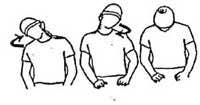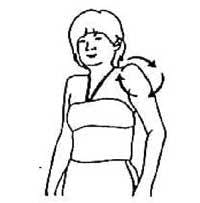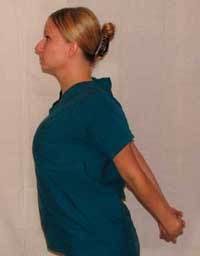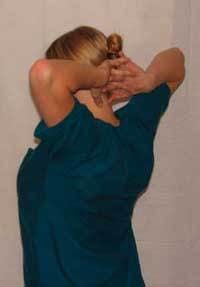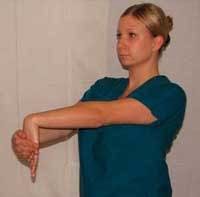The Benefits of Stretching ...
Stretching feels good and is energizing. Still, the benefits of stretching for preventing work-related injuries and improving productivity at work have only recently been examined.
What are the benefits of stretching?
Stretching is primarily advocated as a means to reduce the incidence and severity of muscle strains. Flexible tendons absorb more loads at the muscle-tendon junction and are therefore less likely to become stressed to the point of injury or rupture.1 Periodic stretching throughout the day increases blood circulation and reduces the accumulation of static muscle loads in the neck, shoulders, and back.2 High static loads, such as holding your arms away from your body, are fatiguing, especially when held for a long time. Finally, stretching may prevent an imbalance of musculature, which is considered to contribute to many musculo-skeletal disorders and entrapment syndromes.
Although the physiological benefits of stretching are clear, the psychological or emotional benefits of daily stretching may be the most salient to dentists. It feels good, promotes well-being and body awareness, and has been associated with increased self-worth.3, 4
How can stretching prevent muscle imbalances?
Stretching maintains a balance of musculature and restores the length of shortened tissues. Dentists typically assume a forward, head-and-trunk-flexed posture during the day. Over time, this posture may lead to shortened neck and shoulder muscles (scalene, upper trapezius, and pectoral minor muscles) and lengthened upper back or “posture muscles” (middle trapezius, rhomboids, and serratus anterior). Likewise, muscle imbalances exist in the forearm and finger muscles such that the muscles that flex the fingers (to hold instruments), extend the wrist (to grasp), and rotate the forearm become tight after continual use. Stretching can reduce muscle tightness and potential malalignment of soft-tissue structures.3
Can stretching reduce injuries?
Studies on firefighters and military recruits have found that people who regularly stretch before and after physical activity experience fewer muscle and tendon injuries and at a lower severity than their nonstretching peers.5,6 Among computer workers, those who stretched at least one to two times a day reported decreased neck pain during a four-week period.7 Although the efficacy of stretching programs for dental professionals has not been reported, it would appear that similar benefits would apply.
How should I begin stretching?
A daily stretching plan should include a preliminary warm up, such as walking in place for five minutes, to increase tissue warmth. Slowly move into a stretched position, exhale, and hold each stretch at least 15 seconds. Relax and repeat the stretches, moving the extremity a little farther each time if possible. Never stretch to the point of pain. You might feel a gentle pull, but not a frank sensation of pain. Although bouncing was once advocated to increase motion, this is no longer considered effective to lengthen tendinous tissues.
Stretch throughout the day. Worksite stretching should be designed according to the muscle groups used most in your job and the body region most at risk for injury.8 Between clients, consider doing short stretches such as back stretches, performing a wrist stretch while reaching for a dental instrument, and periodically performing neck stretches after charting.9
Martha J. Sanders, MA, MSOSH, OTR/L
Sanders is an assistant professor of occupational therapy at Quinnipiac University in Hamden, Conn. She has worked with dental practitioners for more than 15 years in rehabilitation and prevention of musculoskeletal disorders. Sanders is the editor of a textbook on ergonomics, “Ergonomics and the Management of Musculoskeletal Disorders.” E-mail her at [email protected].
Stretches for Dentists
Neck Circles
Gently bring chin to chest. Roll neck toward each side. Feel gentle stretch on back and sides of neck.
Shoulder Rolls
Gently rotate shoulders up toward ears, back toward shoulder blades, and down toward chair. This works well while sitting or standing.
Supported Back Bend
Stand straight and place hands firmly on lower back. Gently lean back and look up.
Arms Behind Back
Sitting or standing straight, clasp hands behind back. Move arms back and hold. Feel gentle stretch through front of chest and torso.
Arms Behind Head
Sitting straight, clasp hands behind neck. Move elbows toward back. Feel a gentle stretch in your chest.
Forearm Stretch
Straighten elbow. Bend palm toward floor. Apply gentle pressure to top of hand. Feel stretch in forearm. Then, turn palm up and gently move wrist toward floor.
Hook Grasp
Start with fingers straight. Bend tips toward finger pads. Bend knuckles with finger straight to form a “table top,” then form full fist.


